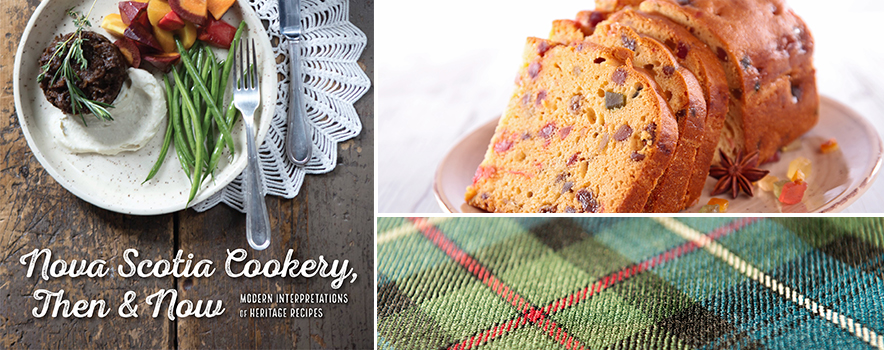 By Joanna, Staff Member, Halifax Central Library
By Joanna, Staff Member, Halifax Central Library
Nova Scotia Cookery, Then and Now features recipes drawn from the Nova Scotia Archives and modernized by local chefs and food industry specialists.
Nova Scotia Cookery, Then & Now
A céic-mheasan
One of the featured recipes in this cookbook is for Lunenburg Fruitcake (pg. 76). I was intrigued by the archival recipe that provided the inspiration: “Gaelic Fruit Cake,” originally created by a Mrs. J. H. Wyman in a local church cookbook called The LaHave Cook Book (1912).
So, what exactly is it that makes the original recipe a “céic-mheasan”?
Well, as it turns out, not very much! Reading through the recipe, nothing in particular stood out as being that unusual in a fruitcake. As notes T.J. Pittman, the chef assigned to adapt the recipe for modern tastes, the only remarkable thing about the recipe is the absence of alcohol!
Cakes (and almonds?) all around
I combed through the cook book collection in the Central Library Local History Room, including historic and community cookbooks, modern cake cookbooks, various nationality-based cookbooks, and anecdotal histories without finding a single other recipe for “Gaelic Fruitcake.”
There is, however, the traditional Scottish fruitcake called the Dundee Cake. As the story goes, Mary Queen of Scots was not a fan of cherries, a traditional fruitcake ingredient of the time. Instead, bakers concocted a fruitcake using almonds, even going so far as to decorate the top with concentric rings of the nut.
Pro recipe tip
If you’re interested in recipes incorporating local ingredients and/or created by local chefs, explore one of the Library’s newest resources, Cloud Cookbooks. Cloud Cookbooks contains approximately 3,000 recipes from local and Canadian cookbooks.
You can search by categories such as "ingredients" or "preparation time," among others. For your next meal inspiration, feel free to give Cloud Cookbooks a try—access is free!


Add a comment to: Gaelic Fruitcake: A Recipe Quest